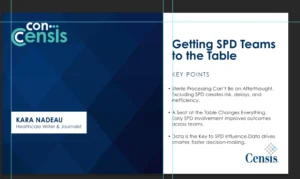Send It Back: The Impact of a Food Recall on a Restaurant
According to the Centers for Disease Control and Prevention, 48 million Americans (approximately 17 percent of the people in the U.S.) get sick, 128,00 are hospitalized, and 3,000 die each year from foodborne diseases. A foodborne-disease outbreak (FBDO) is defined as an incident in which two or more persons experience a similar illness resulting from the ingestion of a common food.
Why is Food Safety So Important?
Contributing significantly to the cost of healthcare, foodborne illnesses, which are a preventable and underreported burden on public health, risk lives, specifically for children under the age of 4 and people over the age of 50. With food hazards including germs and chemical contaminants that can enter the food supply at any point from farm to table, investigative measures and germ data analysis help to identify where improvements in the US food safety system can be made. Safer food guarantees longer, healthier lives, less costly health care, and a more robust food industry.
How Can Restaurants Protect Diners From Foodborne Illnesses?
Food safety training, enhanced server and cook staff hygiene, and a restaurant’s investment in regular inspections by outside food safety experts who can point out infractions or potential problems before they become full-blown crises are detrimental to keeping diners safe from foodborne illnesses. But when a recall is issued, dining establishments must have a plan in place to ensure affected products and menu items containing the recalled products as ingredients are promptly removed, then returned to the vendor or destroyed using methods specified by the manufacturer. This plan should include procedures by which food product recalls are addressed, for how the information is communicated to key employees, for how the products are identified and removed from service, and for how new, safe products will be put into inventory.
Protecting Diners and the Food Industry as a Whole
The safe, efficient and rapid removal of contaminated products is crucial to growers, packers, processors, and distributors of food, regardless of a businesses size. Similarly, restaurants, retail food establishments and other the retail food industry players must have in place a standardized plan that allows them to respond swiftly when a recall is issued. These measures along with food prep and hygiene training can help to protect lives while preventing unnecessary economic loss and consumer bad will in the retail food industry.
Recalls On the Rise
The U.S. Public Interest Research Group report claims that in the last six years, recalls of hazardous meat and poultry have gone up 83 percent. The report also says FDA recalls of produce and processed food went up about 2 percent from 2013 to 2018. Indeed, 2018 was a challenging year for carnivores and herbivores alike, with numerous recalls that affected many areas of the food industry:
- Salad lovers were hit hard in the past year, with a total of three E. coli outbreaks linked to romaine lettuce. The first happened in late December 2017 and overlapped into January of 2018. An official warning was issued after 58 people became ill in Canada. The second E. coli outbreak back-sourced to the Yuma, Arizona region that caused 5 deaths, 96 hospitalizations, and a total of 210 illnesses followed in March and April and lasted through August. Just days short of the Thanksgiving holiday, a third outbreak resulting in over 40 illnesses was later linked to California.
- After multiple illnesses were traced back to Rose Acres Farms’ North Carolina facility, salmonella concerns resulted in multiple recalls of more than 200 million white eggs. And the discovery of mice infestation resulted in further recalls of the company’s eggs.
- Major beef supplier JBS Tolleson issued an October recall of 6.5 million pounds of ground beef that was expanded in December to 12 million pounds of raw beef due to possible salmonella contamination. Earlier in the year, the company recalled more than 35,000 pounds of raw beef due to potential contamination by hard plastic. Further, an outbreak that resulted in 17 illnesses and one death, caused Cargill Meat Solutions to recall around 132,606 pounds of ground beef over E. coli concerns in September.
Other recalls throughout 2018 included King ArthurOpens a New Window. Flour’s March recall of 25,200 pounds of organic coconut flour from 26 states after it tested positive for salmonella; Kellogg’sOpens a New Window. June recall on its Honey Smacks cereal that resulted in 135 people infected with salmonella; McDonald’sOpens a New Window. pulling of an unidentified number of salads distributed by Caito Foods and produced by Fresh Express from its restaurants spanning 15 states in July after nearly 400 people got sick; salmonella concerns in October resulted in retailers like Whole Foods, 7-Eleven, Trader Joe’s, Walmart and Harris Teeter pulling millions of pounds of premade food items such as salads, burritos and wraps from their shelves; Duncan HinesOpens a New Window. recalled four different types of cake mixes in November due to fears of salmonella contamination; a possible link to more than 200 illnesses across almost 40 states resulted in Jennie-OOpens a New Window. recalling over 90,000 pounds of ground turkey meat in November, and an additional 164,210 pounds of raw ground turkey products in December that may have been contaminated with salmonella; and more than 14 tons of Jimmy Dean Heat ’n Serve Original Sausage Links were recalled after the manufacturer received complaints from consumers that found pieces of metal inside the product.
2019 Recalls Making News
In the very first month of 2019, there have already been two significant recalls.
- On Jan. 23, the Food and Drug Administration announced that General Mills is voluntarily recalling 5-lb. bags of Gold Medal Unbleached Flour when product testing found samples contaminated with salmonella. While no illnesses have been reported to state or federal health authorities yet, this recall affects nearly 10,000 bags distributed nationwide with a better-if-used-by date of April 20, 2020.
- Earlier this month, Perdue Foods LLC issued a prompt recall of nearly 70,000 pounds of ready-to-eat chicken nuggets because the company fears the food “may be contaminated with extraneous materials, specifically wood.” While the USDA labels the recall with a health risk of “High,” the bulletin also notes that nobody has been made sick by the nuggets. The company received a total of three consumer complaints, leading them to issue the recall, but the USDA notes that there are zero “confirmed reports of adverse reactions due to consumption of these products.”
Why So Many Recalls?
While recalls across abounded over the past year, according to the FDA’s databaseOpens a New Window., with 1,935 recalls occurring in 2018, this represents a drastic reduction from the 3,609 recalls of 2017. However, why are so many of the foods we consume being connected to illnesses or other contamination? The authors of a recent report by the U.S. PIRG Education Fund are not sure whether the uptick in recalls is due to a more contaminated food supply or simply because new technology makes it easier to catch bacteria in products.
This theory is somewhat confirmed in a statement made by FDA Commissioner Scott Gottlieb to CNN: “I think that the issue isn’t that there’s more unsafe food,” Gottlieb said. “I think what’s happening is that we have better technology than ever before to link outbreaks of human illness to a common pathogen.”
Gottlieb also averred that the Food Safety Modernization Act that became law in 2011 represents a “paradigm shift”, transforming the nation’s food safety system into one that is based on the prevention of foodborne illnesses rather than reaction. “I think food is more safe now than it’s ever been. We have much more resources and additional tools to do effective surveillance,” Gottlieb added.








